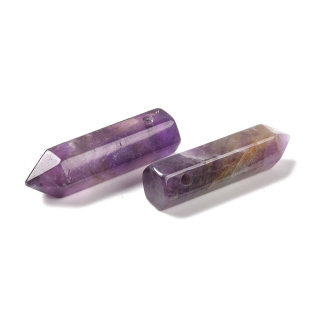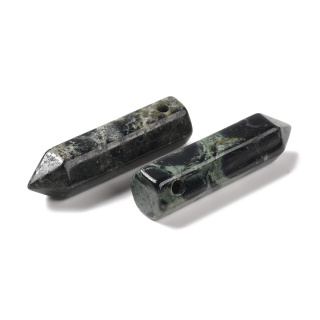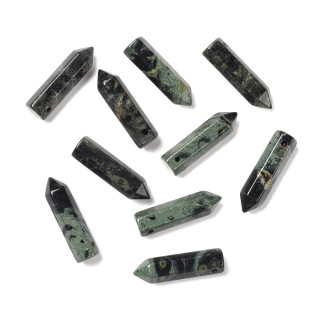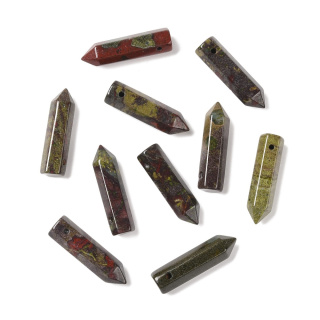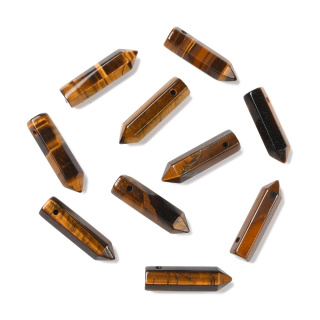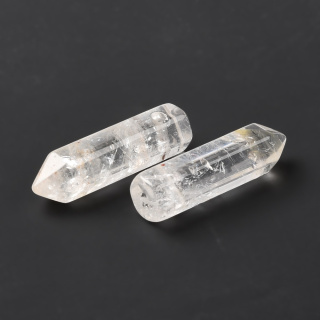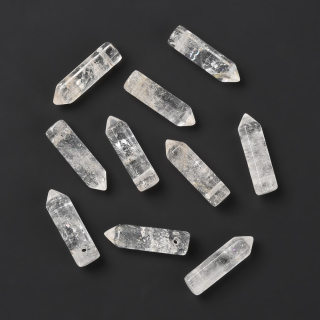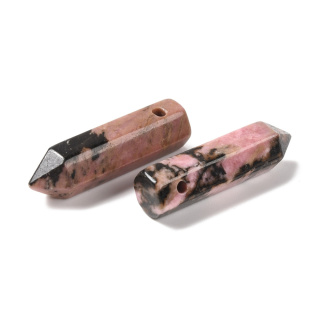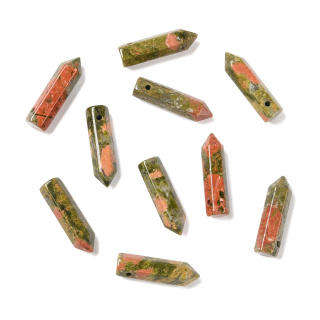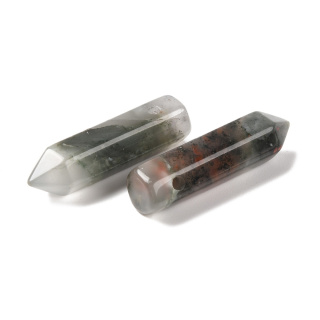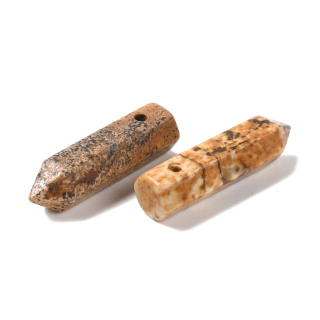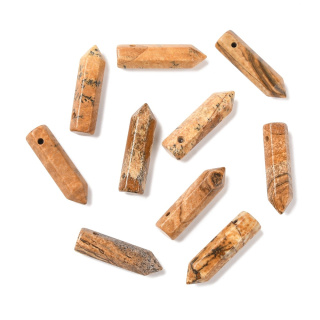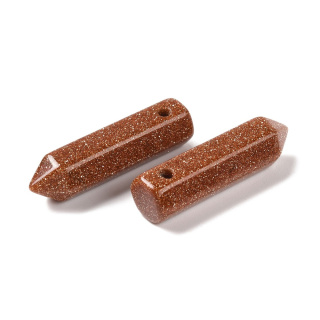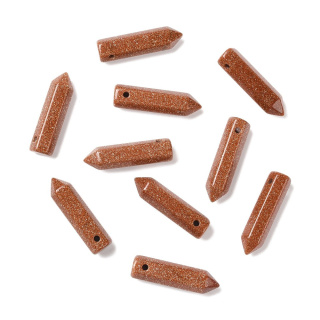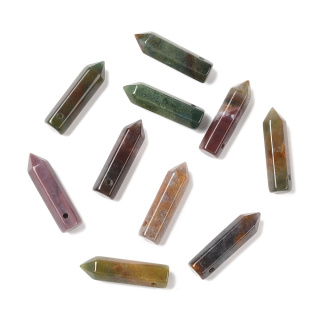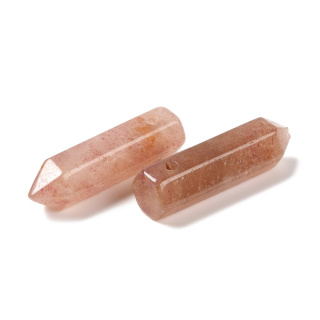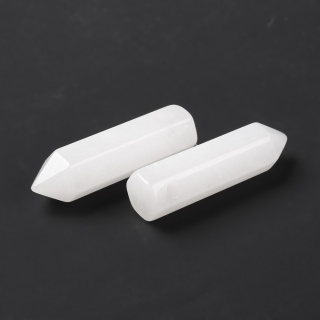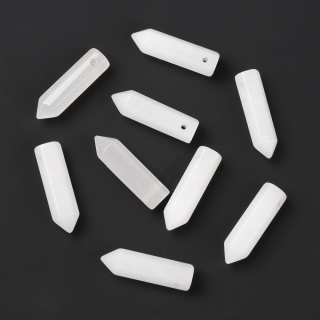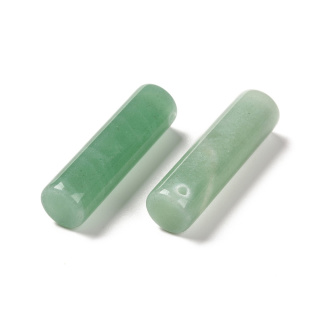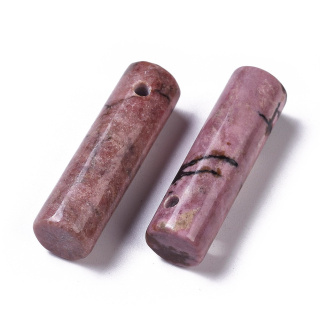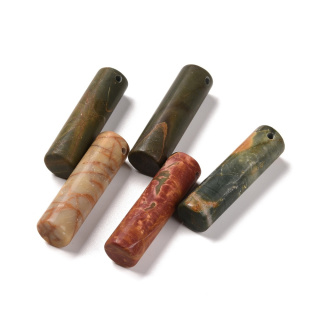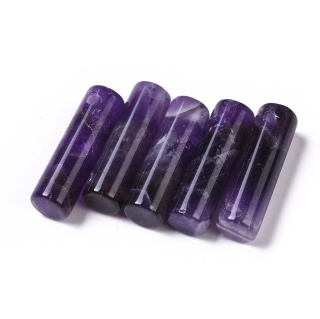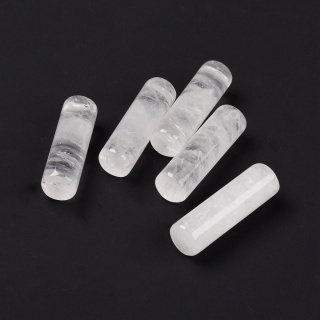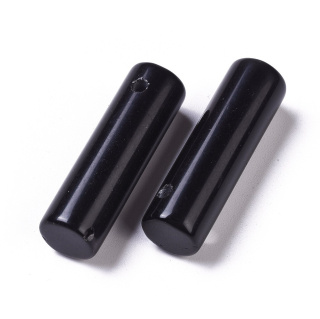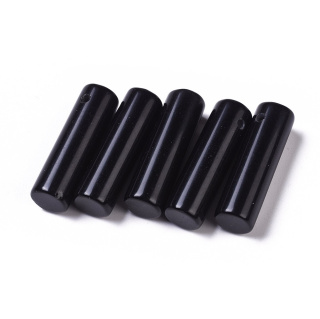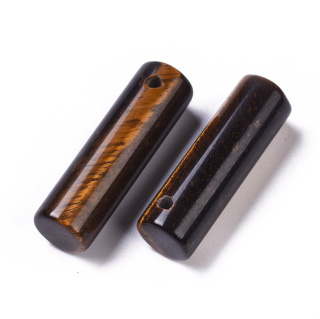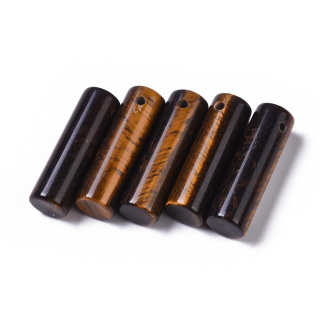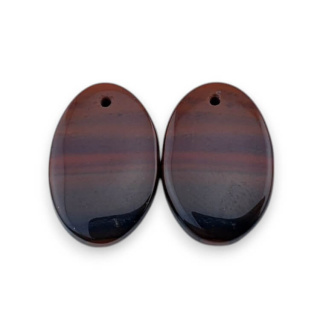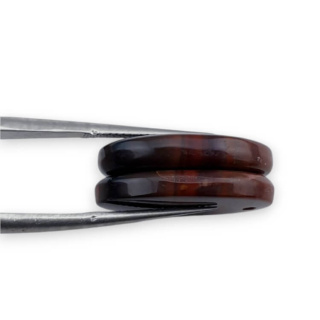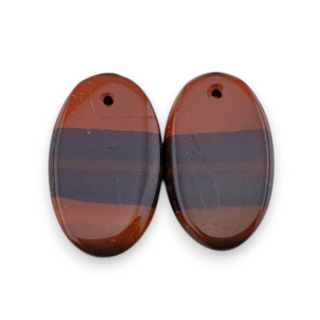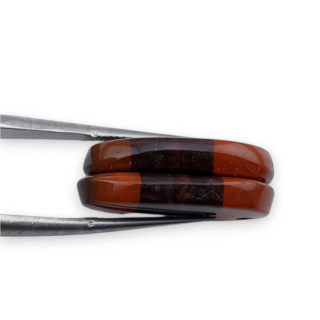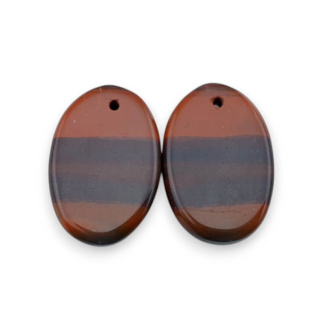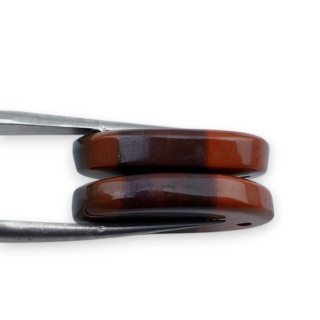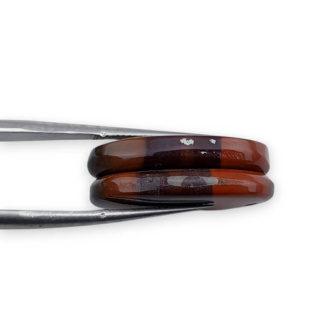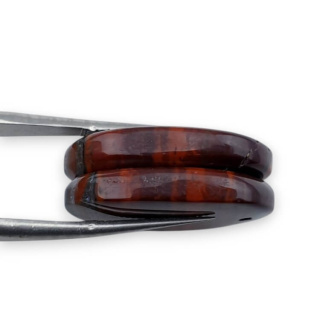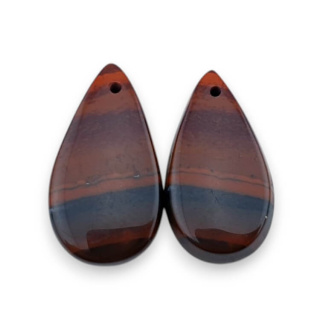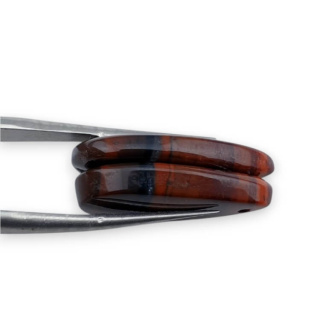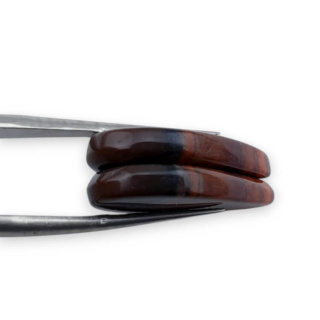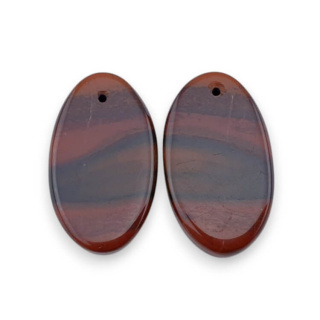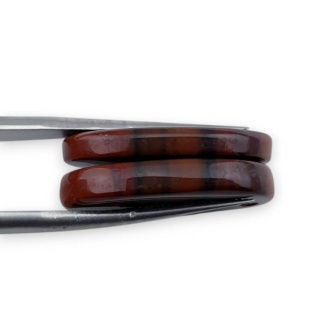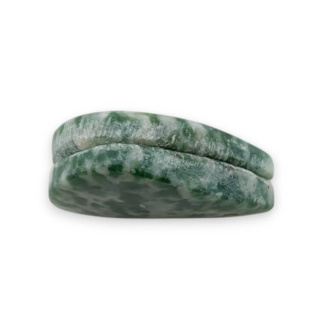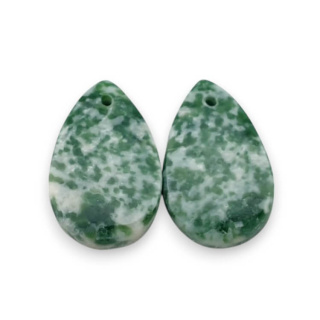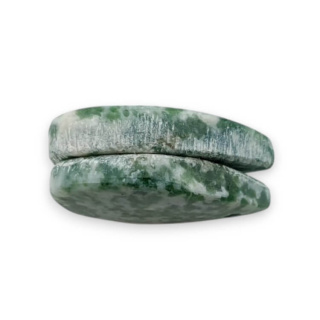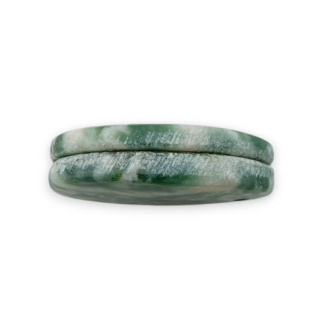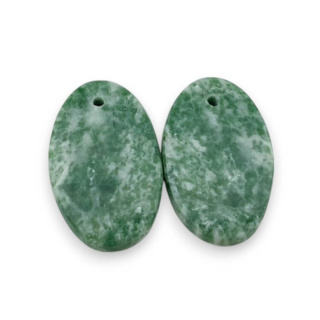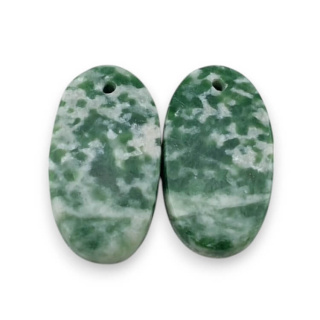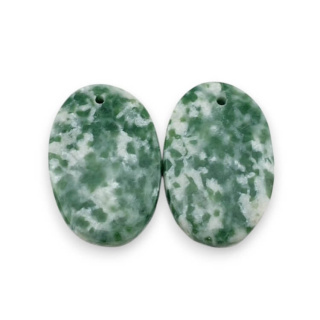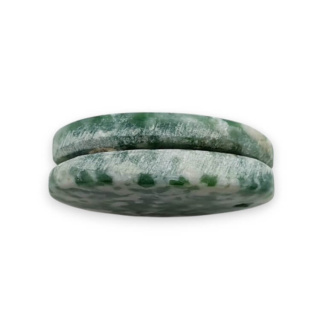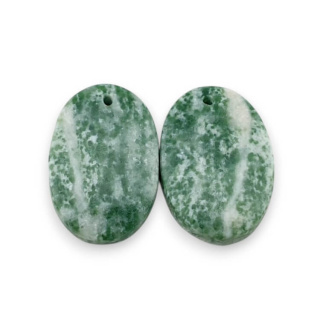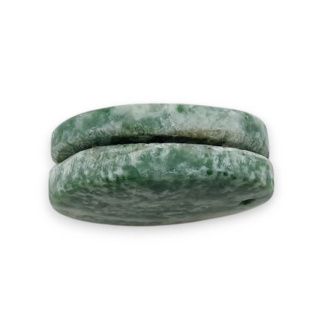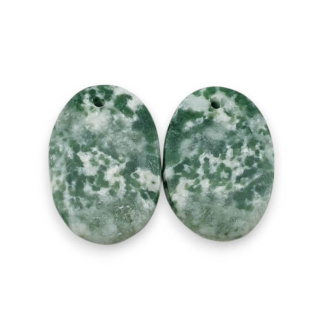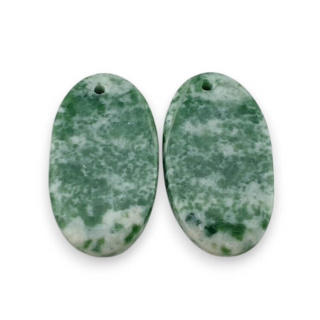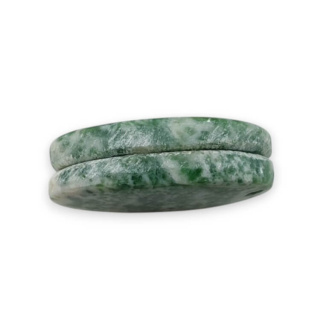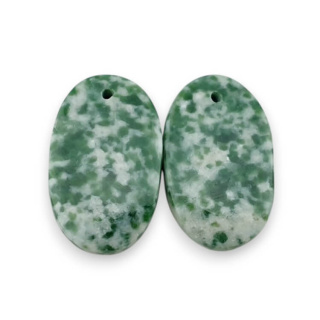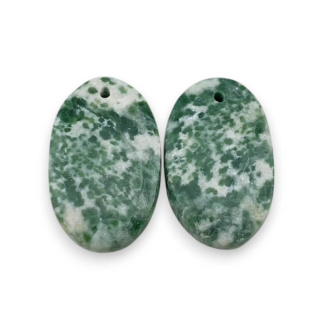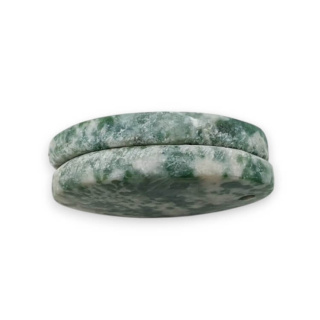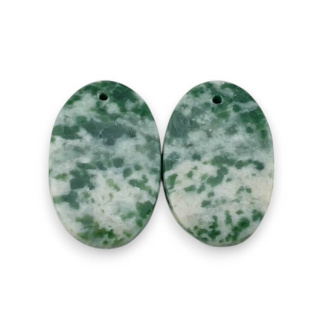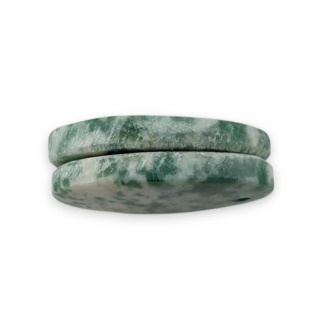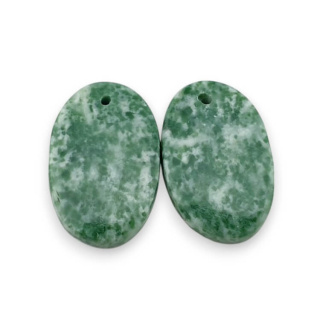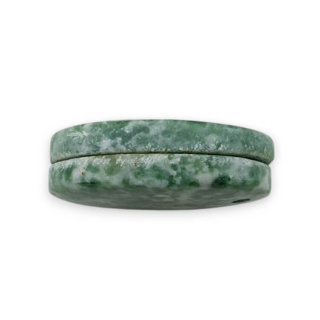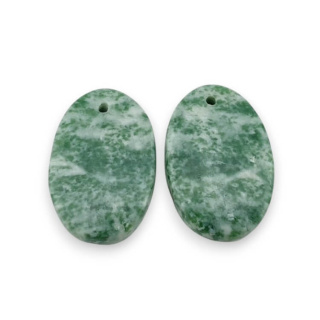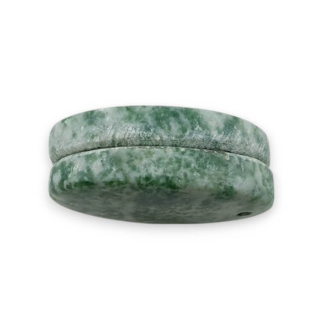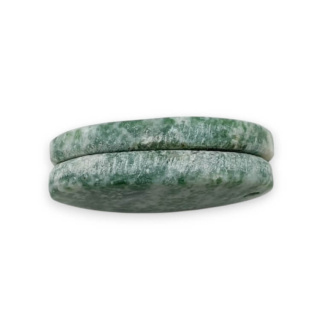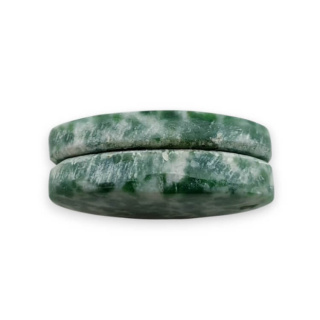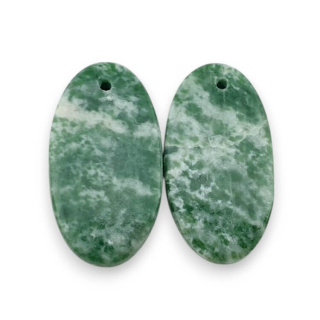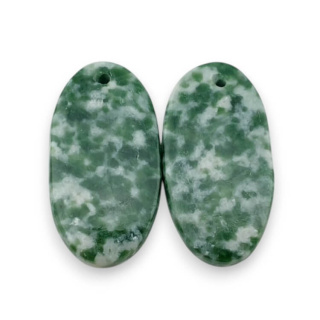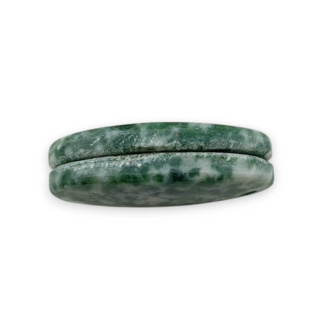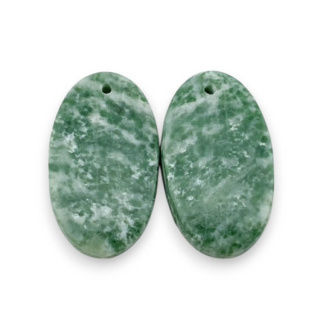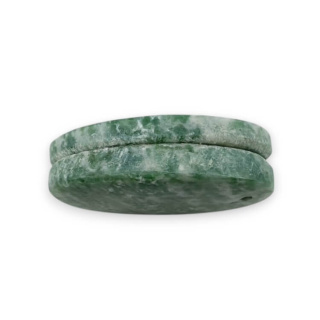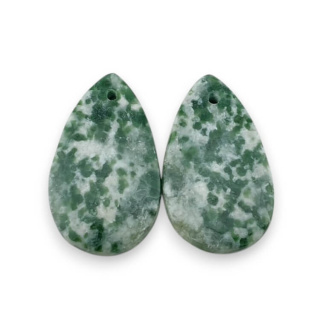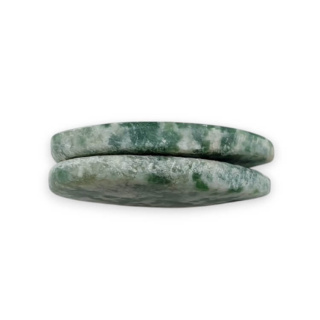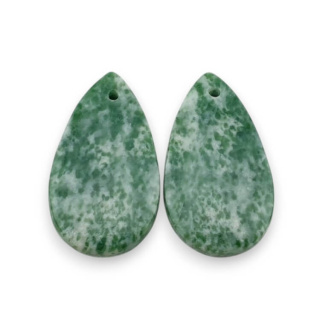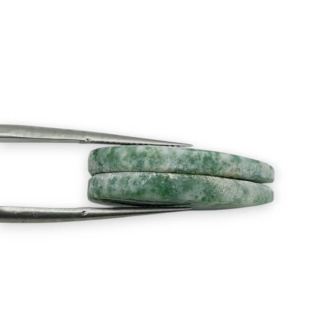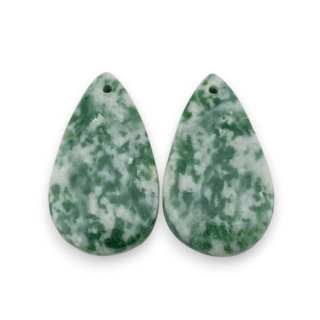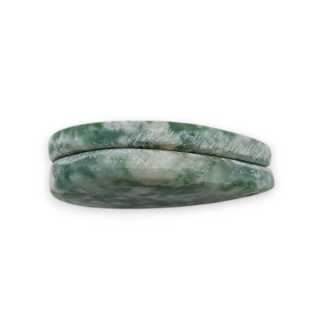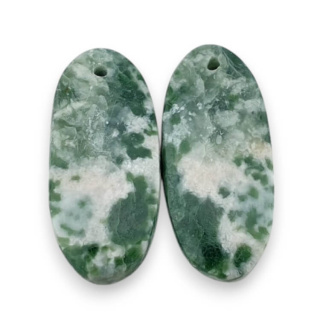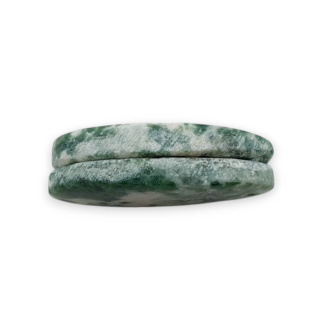Stones with mounting holes for jewelry and decorative items
Number of products : 2028Stones with holes – natural elegance and functionality in jewelry
Stones with holes, also known as drilled stones, are one of the most commonly used elements in handmade jewelry. Their distinctive feature – a hole drilled through the stone – makes them extremely practical for stringing, hanging and combining with other semi-finished products.
What are stones with holes?
Stones with holes are natural or synthetic minerals that have been drilled to enable them to be strung or assembled. The hole in the stone can be transverse (across) or longitudinal (from top to bottom), depending on the intended use in the jewelry design.
Popular names and terms
- Drilled stones
- Stringing stones
- Stones with holes
Raw stones with holes
Raw stones with holes that have not been polished, retaining their original, natural character, are becoming increasingly popular. Ideal for pendants and necklaces in a rustic style.
Stone drilling techniques
The process of drilling stones requires precision and the use of appropriate equipment. Natural stones are brittle and hard, so they should be processed using techniques that minimize the risk of cracking.
The most commonly used methods:
- Wet diamond drilling – the use of diamond drill bits and cooling water minimizes thermal stress and damage to the stone structure.
- Ultrasonic drilling – a technology that uses ultrasonic waves for contactless drilling of particularly hard stones such as corundum or spinel.
Hole diameters
The most common hole diameters in stones range from 0.5 mm to 2 mm. The diameter is selected depending on the intended use of the string, fishing line, wire or connecting links.
Applications of stones with holes
Stones with holes are a basic component in handicraft and artistic jewelry. The main areas of application are presented below:
Stringed jewelry
- Necklaces and chokers
- Bracelets on jewelry elastic or fishing line
- Earrings and pendants
Macramé and decorations
Stones with holes are often woven into wall decorations, dream catchers, and boho-style amulets.
Amulets and talismans
In esotericism, it is believed that stones worn directly on the body – e.g. around the neck or in a pocket – can strengthen energy, protect against negative influences from the environment or attract good luck. Stones with holes are therefore ideal for creating such items.
What to look for when choosing stones with holes?
When choosing stones with holes, it is worth paying attention to several key aspects:
- Drilling quality – the hole should be smooth, without chips or burrs.
- Symmetry and shape – particularly important in projects requiring precision.
- Naturalness of the raw material – is the stone natural, dyed or synthetic?
- Hole size – suitable for the intended use (e.g., thickness of jewelry elastic).
Scientific and mineralogical curiosities
- Some minerals, such as fluorite and calcite, are very brittle and difficult to drill without specialized equipment.
- The Mohs hardness scale plays a key role in assessing a stone's susceptibility to mechanical processing – the higher the hardness, the greater the scratch resistance, but the more difficult it is to drill.
- Dyeing and impregnation of stones can affect their internal structure and susceptibility to cracking during drilling.
![[{[item.product.name]}]]([{[item.product.photo.url]}] 75w)

